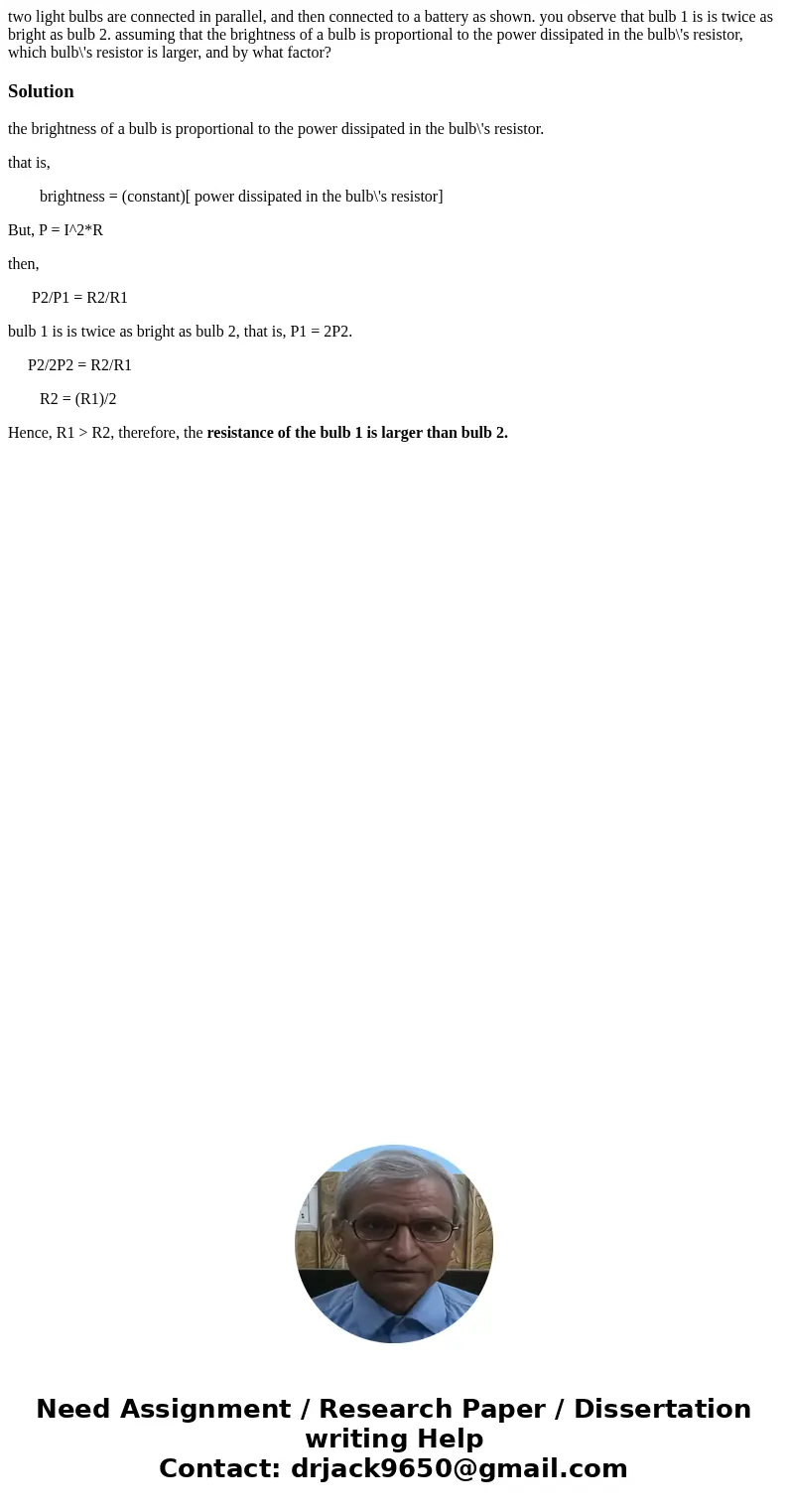two light bulbs are connected in parallel and then connected
two light bulbs are connected in parallel, and then connected to a battery as shown. you observe that bulb 1 is is twice as bright as bulb 2. assuming that the brightness of a bulb is proportional to the power dissipated in the bulb\'s resistor, which bulb\'s resistor is larger, and by what factor?
Solution
the brightness of a bulb is proportional to the power dissipated in the bulb\'s resistor.
that is,
brightness = (constant)[ power dissipated in the bulb\'s resistor]
But, P = I^2*R
then,
P2/P1 = R2/R1
bulb 1 is is twice as bright as bulb 2, that is, P1 = 2P2.
P2/2P2 = R2/R1
R2 = (R1)/2
Hence, R1 > R2, therefore, the resistance of the bulb 1 is larger than bulb 2.

 Homework Sourse
Homework Sourse